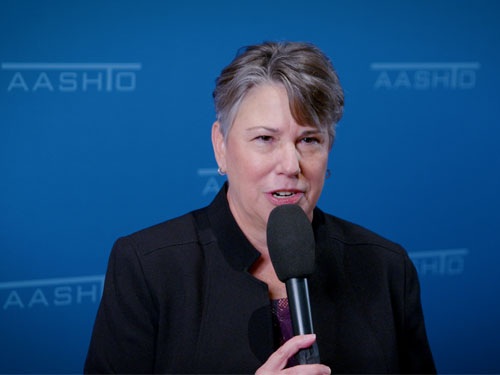A panel of seven female state department of transportation chief executives gathered at the annual Transportation Research Board meeting in Washington D.C. to discuss the challenges and opportunities posed by highlighting equity and diversity needs within broader long-term transportation planning efforts.
“The good news is that we are having this ‘equity’ conversation because transportation has evolved to the point where we are recognizing we are in the people business,” explained Stephanie Pollack, Massachusetts Department of Transportation secretary and CEO.

“We are people-focused agencies and we have to have that to have equity rise to the top,” she stressed. “We’re not in the steel business, the concrete business, or the road business.”
Pollack explained that what transportation can do is connect people to opportunity “spatially,” as affordable housing, health care, and education is not spatially well distributed. “But since our business is about moving people from one place to another, we can overcome this fundamental spatially inequity,” she pointed out.
The challenge, Pollack added, is designing a transportation system that not only works in small towns, rural areas, and big cities, but addresses the needs of seniors, people of different colors and languages, plus income differences.
“In the end, I believe there are just people trying to get where need to go – not pedestrians, not vehicle drivers, not bicyclists, not transit riders,” she said. “It is about giving people transportation options. And that is why the work we are doing tries to incorporate the needs of pedestrians, bicyclists, motorists, and transit riders within the existing pavement footprint of our roads.”

Victoria Sheehan – commissioner of the New Hampshire Department of Transportation and the American Association of State Highway and Transportation Officials 2019-2020 vice president – illustrated how her state’s gaining population is creating major mobility challenges.
“The demographics of our state are changing as we are the state with the second oldest population in the country,” she said. “Traditionally we’ve focused on highways, but now we’re having to shift our focus and build out our transit system to accommodate our aging population. We’re also working with our legislature to adjust [transportation] funding formulas so we can focus more on rural areas as well.”
Julie Lorenz – secretary of the Kansas Department of Transportation and director of the Kansas Turnpike Authority – added that addressing the urban/rural divide in transportation is one of her biggest “equity challenges” going forward.

“We have 20 counties that are growing but only 10 are seeing major growth,” she explained. “That’s why we need to get down to a more ‘granular level’ to understand our regions. It is hard to work at the macro level and at the individual level at the same time – but that’s when we think this philosophy of ‘equity’ needs to be brought to the table.”
Jennifer Cohan, secretary of the Delaware Department of Transportation, added that the “philosophy of equity” means state DOTs “really have to refocus” on the specific needs of the communities they serve.
“It’s all about customizing resources and conversations with each group,” she explained.
Kansas DOT’s Lorenz noted that for her agency’s next 10-year transportation plan, she plans to work more directly with communities in addressing needs rather than to guarantee regional investments.
“We need to reshape our focus from just roads and bridges to offering a slew of transportation services that meet needs at the community level,” she said. “That’s the role equity plays; helping use serve transportation needs at that more granular level.”
 Top Stories
Top Stories
USDOT Makes $1.5B Worth of BUILD Grants Available
December 19, 2025 Top Stories
Top Stories

